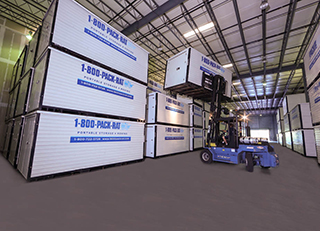
PACKRAT STORAGE REVIEWS CODE
I was informed that my new zip code 74723 is in a non-delivery area for PODS. I contacted PODS requesting delivery of the POD containing our household items only. In July of 2022 we closed on a property in Southern Oklahoma 72 miles north of our old home, or 1 hour and 15 minutes north for some people. Our move is unique moving from a rural property needing 3 PODS, one for the house, one for the shop and one for the barn, not your normal move. The company rents out containers on a monthly basis. You can keep a PODS container for as long as you need it. Both options are cheaper than full-service movers. Contact your local municipality to find out if you need a permit to have a PODS container on the street. According to PODS, they are designed to protect contents from rain and snow. They have a steel frame and aluminum panels, and they are weather-resistant. No, PODS containers are not climate-controlled. Prices for coverage range from $10 per month to several hundred dollars per month, depending on the level of protection. Note that it doesn’t cover damage or loss due to improper packing, burglary at your home or water damage. Contents insurance: This insurance covers both the container and the items inside the container.Container-only insurance: This insurance covers damage to or loss of a moving container due to fire, smoke, vandalism, falling objects, car accidents, lightning, windstorm or hail.We will discuss how these cells react to charging and discharging, why they need management, and what cells we need to use for aeronautical systems (why Automotive cells won’t work) in next week’s Corner.Yes, PODS is insured for moving.
PACKRAT STORAGE REVIEWS SERIES
Through the connection of the cells, modules, and packs in series and parallel patterns, we get pack level nominal voltages of 500V to 600V with the current and power levels we need. The cells are, therefore, managed on an individual cell level by the Battery Management System (BMS). Each module contains 360 cells so we need 26 modules for a 97kWh battery and 39 for a 155kWh system, partitioned into battery packs.Īll the cells vary a bit in parameters and need to be managed strictly, or the battery is not safe. For a 100kWh system for the typical VTOL, we talk 10,000 cells, and for the larger VTOLs like Alia-250, close to 15,000 cells. Looking at the Electroflight modules, we can also understand why a battery system weighs and cost more than its cells. Heat sources (poor electrical connections, corrosion, short-circuits, arcs…).Physical damage during storage, transportation, service, or swapping.External abuse conditions (external short-circuit, overcharge…).Internal fault conditions (cell manufacturing quality issues, dendrites…).Some of the most common root causes that could lead to a thermal runaway are (non-exhaustive list): The recent use of lithium batteries as propulsion energy storage devices in electric and hybrid aircraft increases the importance of properly addressing this hazard, due to their novel function, higher capacity, higher specific energy, and higher voltage and the lack of significant service experience in this context. Here is the motivation for the tougher regulation: The new EASA proposed battery regulations, MOC-3 SC-VTOL, therefore, go beyond the present guideline DO-311A that was written for batteries the size of the Boeing 787 batteries. The energy levels are higher than a Tesla car, and there is no sidewalk to step out to should the battery start burning. The modules are highly complex, and their certification requirements are rightfully though. Through the detailed discussion, we understand that a propulsion battery system for an eVTOL is no simple thing. The modules of the Racer battery pack from Electroflight. We also detail how the battery packs (Figure 2) made by Electroflight for the Rolls Royce Racer are made.įigure 2.

The system level Specific Energy is around 140Wh/kg. The Battery Management System (BMS) is included in the packs. Missing in Figure 1 is the High Voltage junction box that isolates and redirects power in case of a problem in the system, the power wiring, and the charging receptacle.

But the peak potential has to stay below 800V so as not to risk arching when the vehicle flies in thinner air. The reason for the electric potential of 345 Volts is to lower the currents in the system, as these drive cable conductor diameter and thus mass. The system operates at a nominal 345V with a peak potential of 395V and the lowest 250V. It has a liquid-cooled two-pack battery system of 24.8kWh, giving the trainer 50 minutes of endurance with 10 minutes of reserves. In the article, we go through the buildup of the battery system for the Pipistrel Velis Electro trainer, Figure 1, the only electric flying vehicle that has passed certification. We use graphs in the Pipistrel spare parts catalog to show the battery system of the Pipistrel Velis Electro.


 0 kommentar(er)
0 kommentar(er)
